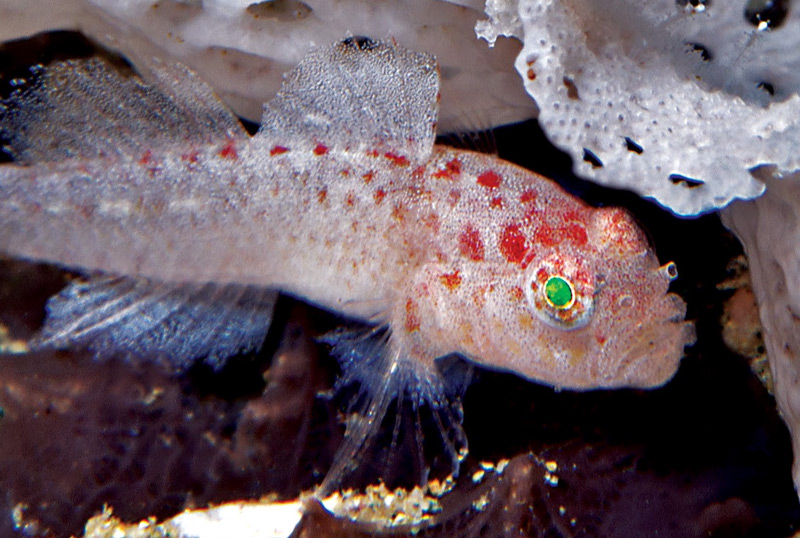Sueviota bryozophyla is a new species of dwarf goby with a peculiar proclivity for bryozoans. The ghostly white Sueviota bryozophyla is distinguished from the multitudes of new Eviota species for among other things, having very pronounced and elongated nasal tubes.
Better known as ‘moss animals, you may not be familiar with bryozoans in our aquariums because they are heavily dependent on filter feeding, and generally don’t get enough to eat in our nutrient poor aquarium environments. But you’ve probably seen bryozoans on fresh live rock or on the side of wild collected corals as that lacy ‘material’ which eventually degrades never to be seen in our reef tanks again.

The newly described Sueviota bryozophyla was discovered by underwater photographers including Graham Abbott, Ned and Anna DeLoach, Takako Uno, and Stephen Wong who specialize in in traveling to remote places, and documenting the rare and unusual. The new bryozoan microgoby was found in Indonesia, at Ambon, Molucca Islands and Lembeh Strait, North Sulawesi.
The bryozoan goby is unique among both Eviota and Sueviota by having pelvic fins joined by a membrane that forms a disc underneath the body of the fish. The body of Sueviota bryozophyla is a ghostly white to match the bryozoans with which it is associated and is decorated by scattered red spots mostly on the head, and trailing along the anterior portion of the body.
Sueviota bryozophyla is described by Allen et. al. in the Journal of the Ocean Science Foundation.




